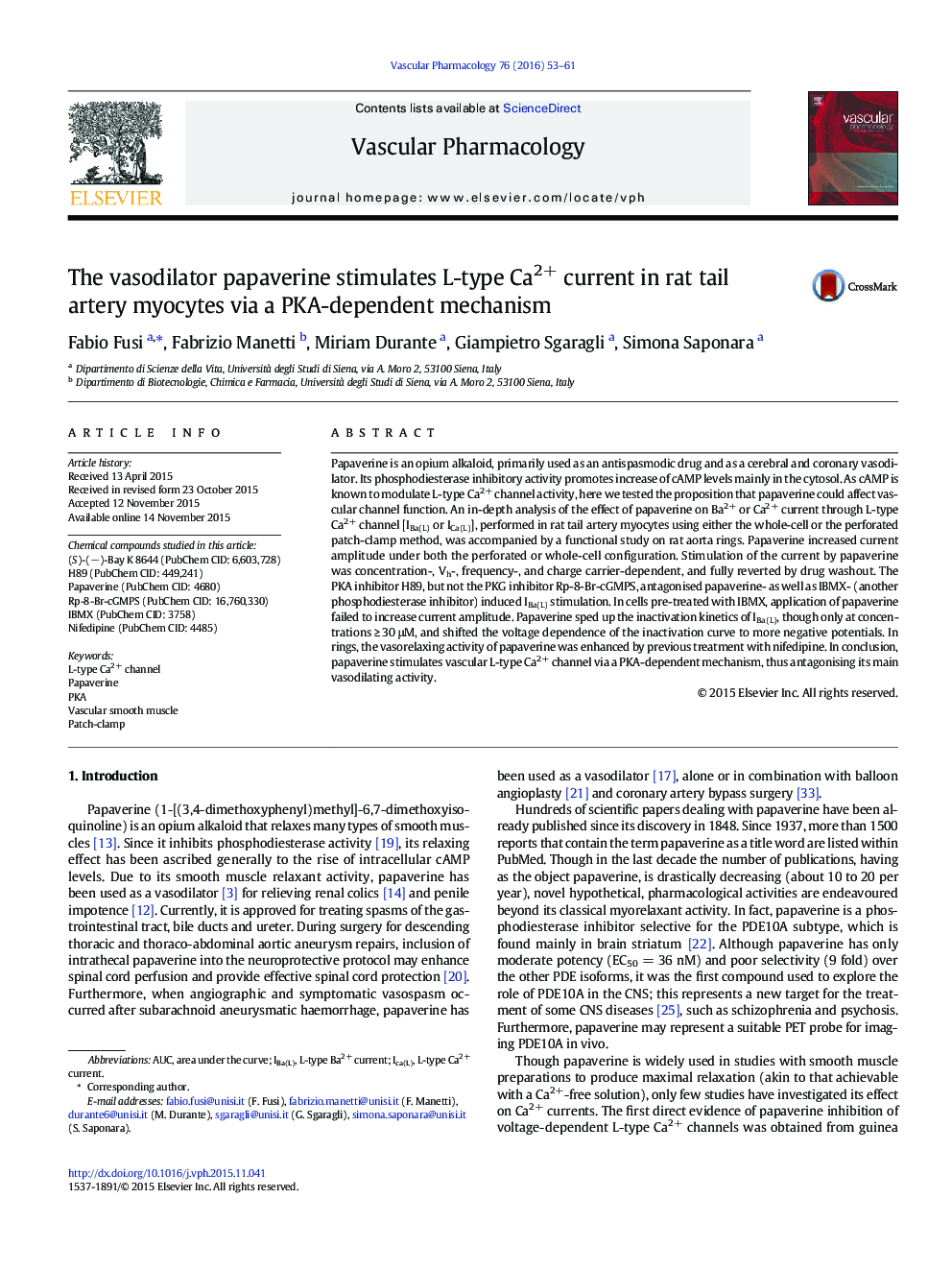| Article ID | Journal | Published Year | Pages | File Type |
|---|---|---|---|---|
| 2573976 | Vascular Pharmacology | 2016 | 9 Pages |
Papaverine is an opium alkaloid, primarily used as an antispasmodic drug and as a cerebral and coronary vasodilator. Its phosphodiesterase inhibitory activity promotes increase of cAMP levels mainly in the cytosol. As cAMP is known to modulate L-type Ca2+ channel activity, here we tested the proposition that papaverine could affect vascular channel function. An in-depth analysis of the effect of papaverine on Ba2+ or Ca2+ current through L-type Ca2+ channel [IBa(L) or ICa(L)], performed in rat tail artery myocytes using either the whole-cell or the perforated patch-clamp method, was accompanied by a functional study on rat aorta rings. Papaverine increased current amplitude under both the perforated or whole-cell configuration. Stimulation of the current by papaverine was concentration-, Vh-, frequency-, and charge carrier-dependent, and fully reverted by drug washout. The PKA inhibitor H89, but not the PKG inhibitor Rp-8-Br-cGMPS, antagonised papaverine- as well as IBMX- (another phosphodiesterase inhibitor) induced IBa(L) stimulation. In cells pre-treated with IBMX, application of papaverine failed to increase current amplitude. Papaverine sped up the inactivation kinetics of IBa(L), though only at concentrations ≥ 30 μM, and shifted the voltage dependence of the inactivation curve to more negative potentials. In rings, the vasorelaxing activity of papaverine was enhanced by previous treatment with nifedipine. In conclusion, papaverine stimulates vascular L-type Ca2+ channel via a PKA-dependent mechanism, thus antagonising its main vasodilating activity.
Graphical abstractFigure optionsDownload full-size imageDownload high-quality image (96 K)Download as PowerPoint slide
